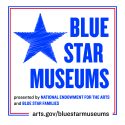BECK FAMILY CENTER GALLERY
Wiggle, Waggle, Woof…Meow!
March 29 – June 15, 2025
• Exhibit Open: Tuesday – Saturday 10:00 am to 5:00 pm & Sunday 1:00 to 5:00 pm
• Gallery Admission – Free
GATHER AT THE GALLERIES – EXHIBIT OPENING RECEPTION
Saturday, March 29 | 5:00 to 7:00 pm
Admission $10.00 | Cedarhurst Members – Free
- Open bar & appetizers | 5 to 6 pm
- Shrode Fine Art & Craft Competition Awards Announcement | 6 pm
- Gallery hop to see the art & meet the artists | 5 to 7 pm
- Shuttle rides to Shrode Art Center | 6 to 7 pm
GALLERY SPONSORS:


ABOUT THE EXHIBIT:
Step into a paws-itively purrfect world at Cedarhurst’s cat & dog Art Exhibition, where fur-tastic creativity meets wagging tails and whiskers! From playful pups to curious kitties, this exhibit celebrates the charm and character of our favorite furry friends through vibrant art and design. Whether you are a cat person, a dog lover, or both, you are sure to leave with a smile and a new appreciation for the artistic side of our beloved pets
“You cannot share your life with a dog…or a cat, and not know perfectly well that animals have personalities and minds and feelings.” – Jane Goodall


(top) Helen Ashraf (Carbondale), My Cubist Kirby, ceramic sculpture
(bottom) Savannah Millsap (East Alton), Miss Honey, photograph





